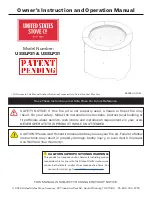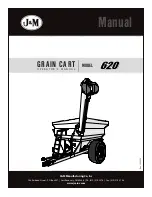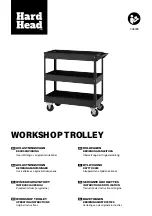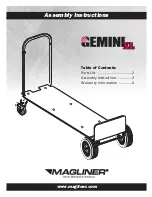
OPERATION & MAINTENANCE
FUELING YOUR FIRE PIT
The operation of this wood fire pit in a manner inconsistent
with the owner’s manual will void your warranty. Waste
and other flammable materials should not be burned in
your fire pit. DO NOT BURN:
1. Garbage;
2. Lawn clippings or yard waste;
3. Materials containing rubber, including tires;
4. Materials containing plastic;
5. Waste petroleum products, paints or paint thinners,
or asphalt products;
6. Materials containing asbestos;
7. Construction or demolition debris;
8. Railroad ties or pressure-treated wood;
9. Manure or animal remains;
10. Saltwater driftwood or other previously salt water-
saturated materials;
11. Unseasoned wood; or
12. Paper products, cardboard, plywood, or particleboard.
(The prohibition against burning these materials does
not prohibit the use of fire starters made from paper,
cardboard, sawdust, wax, and similar substances to
start a fire in an affected wood heater.)
Burning these materials may result in the release of toxic
fumes or render the heater ineffective and cause smoke.
USE SEASONED FIREWOOD
Deadwood lying on the forest floor should be considered
wet and requires full seasoning time. Standing deadwood
can usually be considered to be about 2/3 seasoned.
Smaller pieces of wood will dry faster. All logs exceeding
6” in diameter should be split. The wood should not be
stored directly on the ground. Air should circulate through
the logs. A 24” to 48” air space should be left between
each row of logs, which should be placed in the sunniest
location possible. The upper layer of wood should be
protected from the element but not the sides. A good
indicator of if the wood is ready to burn is to check the
piece ends. If cracks are radiating in all directions from
the center then the wood should be dry enough to burn.
If your wood sizzles in the fire, even though the surface
is dry, it may not be fully cured and should be seasoned
longer. It is EXTREMELY IMPORTANT that you use DRY
WOOD only in your fire pit. The wood should have dried
for 9 to 15 months, such that the moisture content (in
weight) is reduced below 20% of the weight of the log.
It is very important to keep in mind that even if the wood
has been cut for one, two, or even more years, it is not
necessarily dry, if it has been stored in poor conditions.
Under extreme conditions, it may rot instead of drying.
This point cannot be overstressed; the vast majority
of the problems related to the operation of a fire pit is
caused by the fact that the wood used was too damp or
had dried in poor conditions. These problems can be:
• ignition problems
• low energy yield
• smoking
• incomplete log combustion
Do not burn manufactured logs made of wax
impregnated sawdust or logs with any chemical
additives.
Manufactured logs made of 100% compressed
sawdust can be burned, but be careful burning too much of
these logs at the same time. Start with one manufactured
log and see how the fire pit reacts. You can increase the
number of logs burned at a time.
CLEANING YOUR FIRE PIT
Once the fire has gone out and the pit has been given
sufficient time to cool you may empty any ash. Empty as
much ash out of the fire pit as possible if rain is expected,
or before water is used to clean it. NOTE: Optional firepit
shovel available for purchase.
ASH DISPOSAL
CAUTIONS:
• ASHES COULD CONTAIN HOT EMBERS EVEN
AFTER TWO DAYS WITHOUT OPERATING THE
FIREPIT.
Ashes should be placed in a metal container with a tight-
fitting lid. The closed container of ashes should be placed
on a non-combustible floor or the ground, away from all
combustible materials, pending final disposal. The ashes
should be retained in the closed container until all cinders
have thoroughly cooled.
If you need to dispose of ashes without a metal
container then take these precautions:
Empty ashes in
an area free of any combustibles then drown the ashes
with water. Next, mix the ashes and embers and scrape
all partially-burned sticks and logs to make sure all the
hot embers are off them. Stir the embers after they are
covered with water and make sure that everything is
wet. Feel for heat left in coals, embers, and any partially-
burned wood. Once you think you are done, take an
extra minute and add more water. Check the entire area
possible sparks or embers. If it is too hot to touch, it is too
hot to leave.
4
© 2022 United States Stove Company






















